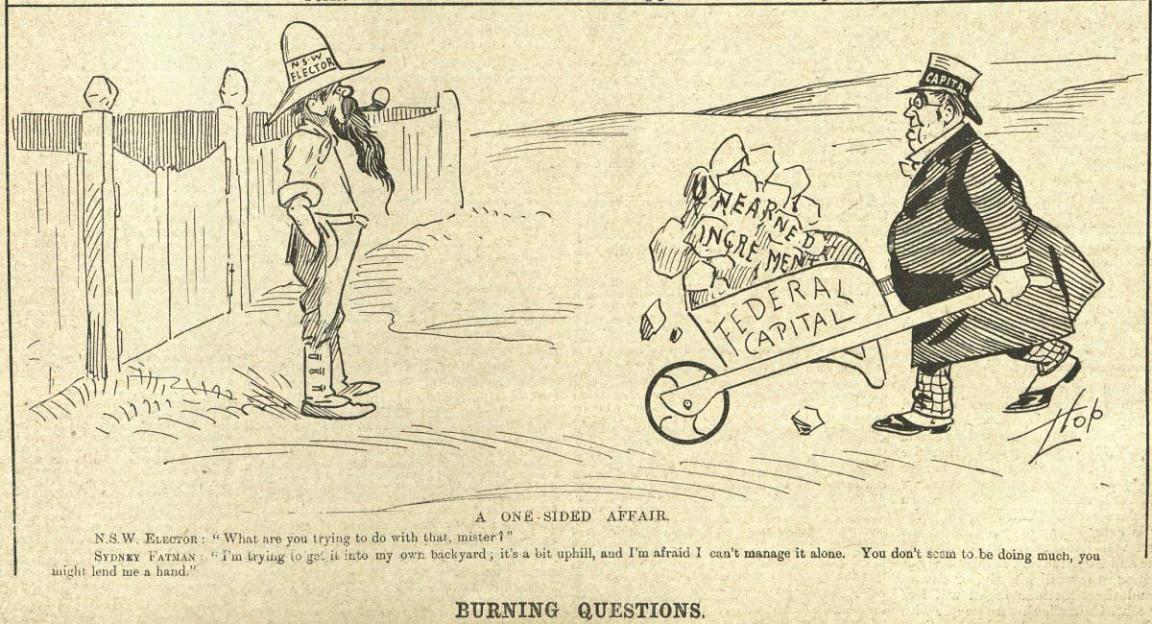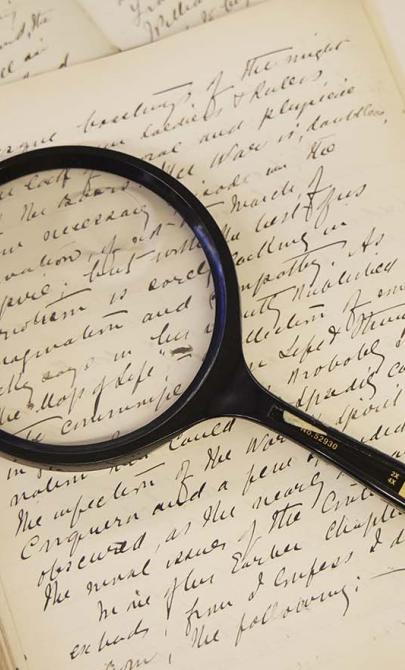Commentary: Conventional Lies
The Federation debate
The idea of a Federation of the Australian colonies was first discussed around 1850. It gained real momentum in 1889 after a speech by veteran New South Wales politician Sir Henry Parkes. By 1893, popular support for Federation was growing, and Federation Leagues were forming in most colonies. There were strong views both for and against.
The article below, titled Conventional Lies of the Anti-Federal Party, is from The Bulletin, a weekly Australian magazine published between 1880 and 2008. At the time, The Bulletin focused on politics and business and was influential in shaping public opinion.
In this article, The Bulletin lists 17 so-called ‘lies’ told by the New South Wales Anti-Federal Party in arguments against Federation. It then sets out what it claims is the truth behind each one.
The full article, including this comic, is available on Trove.
![A yellowed sheet of paper with the headline '[Co]nventional Lies of the Anti-Federal Party'. The 'C' and 'O' of the word 'conventional' is missing as the corner of the page has been torn off. The very small text is set out in four columns](https://www.library.gov.au/sites/default/files/styles/image_media/public/images/2024-11/collection-manuscript-lies-anti-federal-nla-obj-135107257.jpg?itok=BPhbbH5t)
(1899). Conventional lies of the Anti-Federal Party, nla.gov.au/nla.obj-135107257
(1899). Conventional lies of the Anti-Federal Party, nla.gov.au/nla.obj-135107257
The National Library of Australia owes its existence to Federation and has collected a wide range of original materials documenting the Federation movement. It holds the world’s most comprehensive collection of Federation-related records.
You can find more in our Federation Research Guide.
The Bulletin (20 May 1899) features a comic that makes reference to the Federation debate. Throughout this issue are a range of other articles and commentaries about the Federation debate.

(1880) The Bulletin, nla.gov.au/nla.obj-683703369
(1880) The Bulletin, nla.gov.au/nla.obj-683703369
Analysing the article
This article is useful for teaching media literacy. It presents itself as a fact-check of the Anti-Federal Party’s arguments, but it also strongly asserts The Bulletin’s own views.
Use the following questions to guide student analysis:
- Who created this article?
- Why was it created?
- When was it created? What else was happening at that time?
- What sources does the article rely on?
- What information is missing?
- How might different people interpret this article?
- What reaction is the article trying to provoke?
- What language is used to shape opinion?
- Does the use of facts and figures make the article more persuasive?
- How could we verify The Bulletin’s claims?
- What do we know about The Bulletin as a publication?
Historical context
Understanding the context helps students assess the reliability and motives behind the article.
- Federation was first discussed in the 1850s. Britain supported the idea, especially after Canada’s successful federation in 1867.
- The Federal Council of Australasia was created in 1885 but had little power.
- Federation gained momentum after Sir Henry Parkes’s Tenterfield Address in 1889.
- A series of conventions between 1891 and 1898 developed a draft Constitution Bill.
- Referenda were held in the colonies. New South Wales initially voted only narrowly in favour. After further amendments, all colonies except Western Australia voted again in 1899, with WA joining in 1900.
- The Constitution Bill received Royal Assent in March 1900, and the Commonwealth of Australia was proclaimed to begin on 1 January 1901.
About The Bulletin
- One of Australia’s longest-running magazines (1880–2008).
- Its political and social views shifted over time with changes in ownership and editorial leadership.
- Early editions were known for nationalist, anti-British, and often racist views. The slogan “Australia for the white man” appeared prominently.
- Influential contributors included Miles Franklin, Banjo Paterson and Henry Lawson.
- Over time, it became more conservative and lost relevance until a relaunch in the 1960s, when it took a more inclusive and progressive direction.
- It closed in 2008 due to declining readership in the digital era.



